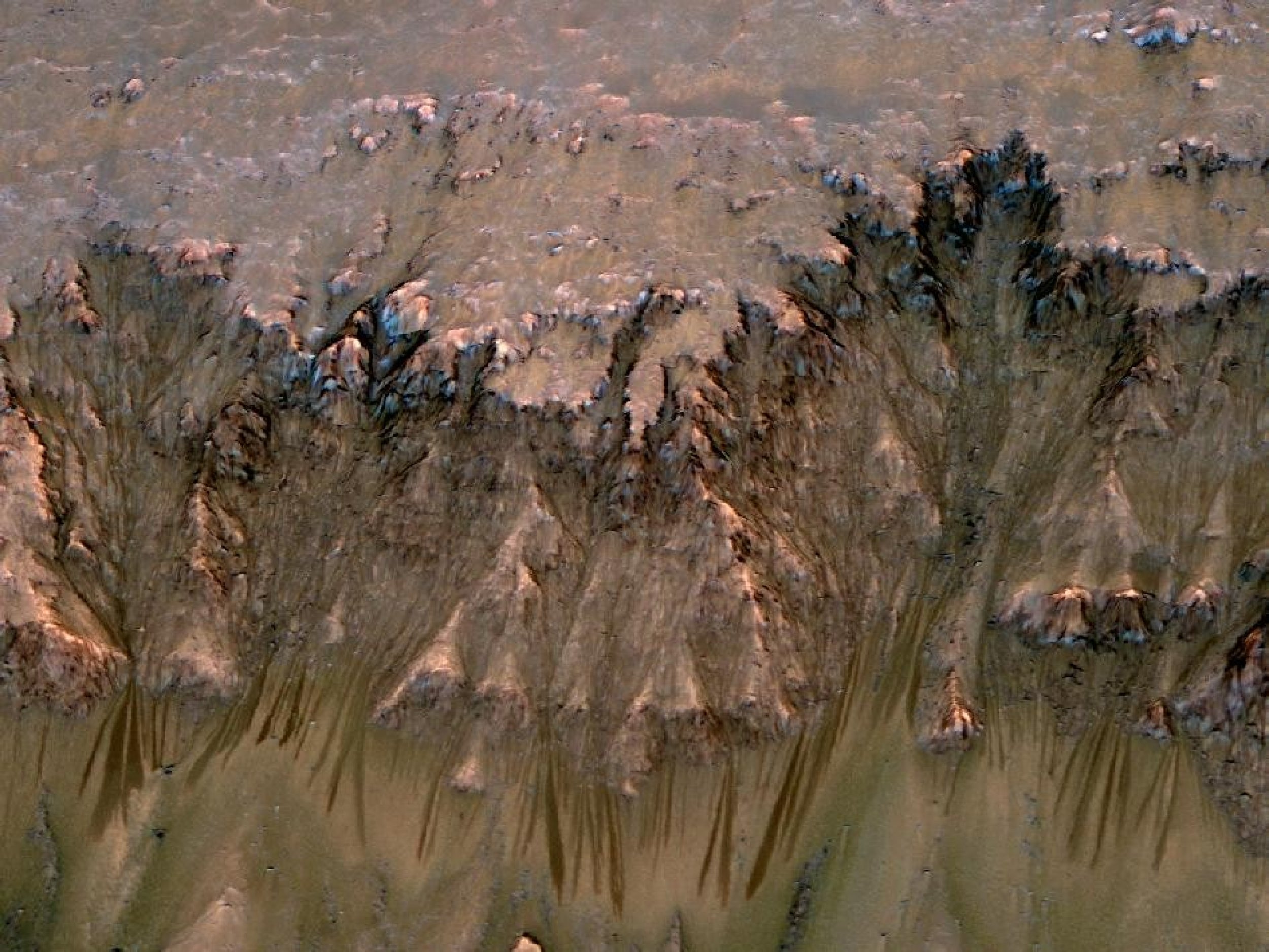Water on Mars At a Glance [Photos]
NASA's Mars Reconnaissance Orbiter revealed on Thursday that highly salty water may flow on Red Planet during the warmest months, which raise the chances that life could exist on Mars.
"NASA's Mars Exploration Program keeps bringing us closer to determining whether the Red Planet could harbor life in some form and it reaffirms Mars as an important future destination for human exploration,” NASA Administrator Charles Bolden said.
The pictures point to pictures which feature dark, finger shaped features extending down Martian slopes during late spring through summer. These slopes fade in the winter and return in the spring.
"The best explanation for these observations so far is the flow of briny water," said Alfred McEwen of the University of Arizona, Tucson. McEwen is part of a team that is working with the orbiter's High Resolution Imaging Science Experiment (HiRISE) and lead author of a report about the recurring flows published in Thursday's edition of the journal Science.
Researchers are still puzzled with some feature of the observations, but flows of salty water on the Red Planet fit the features' characteristics.
Moreover, it has a perfectly scientific explanation that the flowing water is salty. Saltiness lowers the freezing temperature of water.
Pure water would freeze at the observed temperature whereas an active flow could get warm enough, even in the shallow subsurface, to sustain liquid water that is about as salty as Earth's oceans.
Images of the water shows that flows lengthen and darken on rocky equator-facing slopes from late spring to early fall. Taking the seasonality, latitude distribution and brightness into account, it is a volatile material. Because it's too hot for carbon-dioxide frost and too cold for pure water, NASA says this suggests salt water brines.
"These dark lineations are different from other types of features on Martian slopes," said Mars Reconnaissance Orbiter Project Scientist Richard Zurek of NASA's Jet Propulsion Laboratory in Pasadena, Calif. "Repeated observations show they extend ever farther downhill with time during the warm season."
Images that are featured are about 0.5 to 5 yards or meters wide, with lengths up to hundreds of yards. Narrow
The width of the gullies on Martin slopes is much thinner than previously reported gullies. The scientists were clear to point out that the larger gullies would have required a larger quantity of water to form than what was recently discovered.
However, some of those locations display more than 1,000 individual flows.
The images show that flows lengthen and darken on rocky equator-facing slopes from late spring to early fall. The seasonality, latitude distribution and brightness changes propose that a unpredictable material is involved.
The settings on Mars are too warm for carbon-dioxide frost and, at some sites the settings are too cold for pure water. These settings suggest the action of brines.
Salt deposits over much of Mars indicate brine's were abundant in Mars' past.
"It's a mystery now, but I think it's a solvable mystery with further observations and laboratory experiments," McEwen said.
This is the closest scientists have gotten to finding evidence of liquid water on Mars. They have detected frozen water in much middle to high-latitude regions.
However, nothing until now has suggested there is flowing water on the planet.
Finding water on mars has long been a search of NASA. If there is water, there is hope for life on the planet. The agency has been sending spacecrafts to Mars since the 1970s.
"If there were to have been life on Mars and if it evolved and adapted to this permafrost world, I think those are reasonable things that we could go look for," NASA officials said in a press conference. "If there are cold salty waters that never freeze, despite the cold frozen surrounding ground, then they simply remain active at all times, although at lower metabolic rates when the coldest temperatures occur. If the environment is one which it is liquid seasonally but pretty much freezes up solid at other times of the year, then that would have to be an organism that can go into a dormant state."
McEwen and his team are hoping the NASA and the European Space Agency mission, ExoMars, will help produce more evidence in support of their discovery. The ExoMars launch in 2016 will send a probe to mars to detect trace gases in the Martian atmosphere, including water.
MUST READ: Does Flowing Salty Water Sustain Life Beneath Mars Surface?






© Copyright IBTimes 2024. All rights reserved.





















